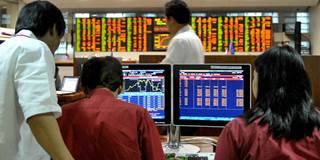The global financial safety net has grown since the financial crisis of a decade ago, thanks to regional financial arrangements and bilateral swap agreements. But regional arrangements are not found everywhere, while only a limited number of central banks have access to swap agreements.
BALI – “Today it is a sin to run a current-account deficit, and that is crazy,” lamented Singapore Deputy Prime Minister Tharman Shanmugaratnam at the annual gathering of the International Monetary Fund (IMF) and the World Bank in Bali this month. Ministers who could boasted of their balanced current accounts, while officials from deficit countries were treated like reprobates. Yet, as Tharman reminded the crowd, countries like South Korea and Singapore “grew by running current account deficits at early stages of development so we could invest ahead for growth while our savings were being built up.”
Economic theory is squarely on his side. A family need not wait until it has savings equal to the value of a house before buying one. Instead, it makes sense to borrow while the parents are young and their income is still relatively low, and to repay once they are better off. The same logic applies to a developing country, which in order to escape poverty should run a deficit and borrow while still poor.
In a poor country, capital – whether factories, infrastructure, or schools – is scarce, so the rate of return on new investment is high. It is precisely the gap between the profitability of its investment and the interest rate it pays on loans that allows a poor country to prosper. That was the strategy that allowed Singapore, South Korea, and other successful economies to grow rich.

BALI – “Today it is a sin to run a current-account deficit, and that is crazy,” lamented Singapore Deputy Prime Minister Tharman Shanmugaratnam at the annual gathering of the International Monetary Fund (IMF) and the World Bank in Bali this month. Ministers who could boasted of their balanced current accounts, while officials from deficit countries were treated like reprobates. Yet, as Tharman reminded the crowd, countries like South Korea and Singapore “grew by running current account deficits at early stages of development so we could invest ahead for growth while our savings were being built up.”
Economic theory is squarely on his side. A family need not wait until it has savings equal to the value of a house before buying one. Instead, it makes sense to borrow while the parents are young and their income is still relatively low, and to repay once they are better off. The same logic applies to a developing country, which in order to escape poverty should run a deficit and borrow while still poor.
In a poor country, capital – whether factories, infrastructure, or schools – is scarce, so the rate of return on new investment is high. It is precisely the gap between the profitability of its investment and the interest rate it pays on loans that allows a poor country to prosper. That was the strategy that allowed Singapore, South Korea, and other successful economies to grow rich.